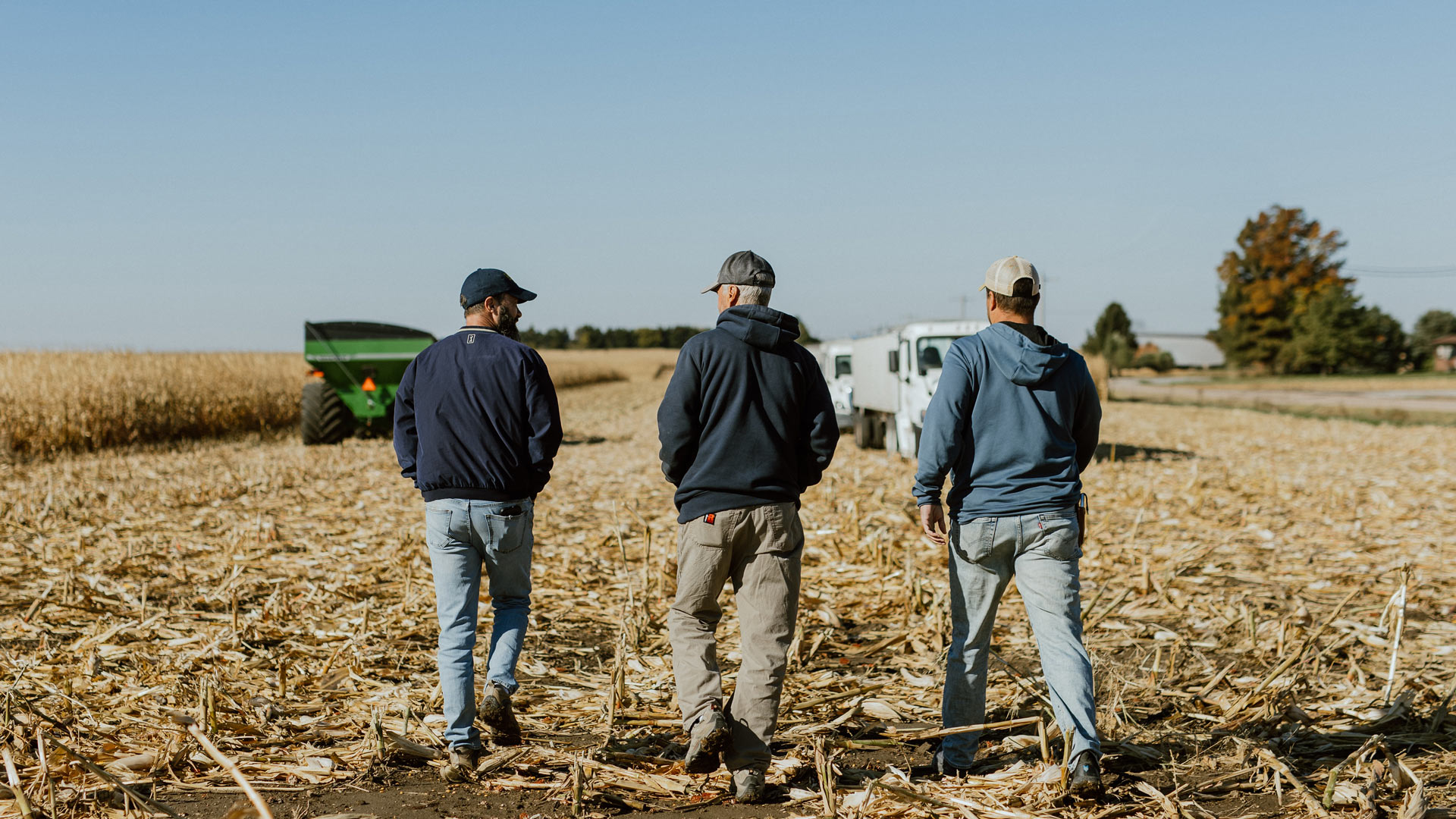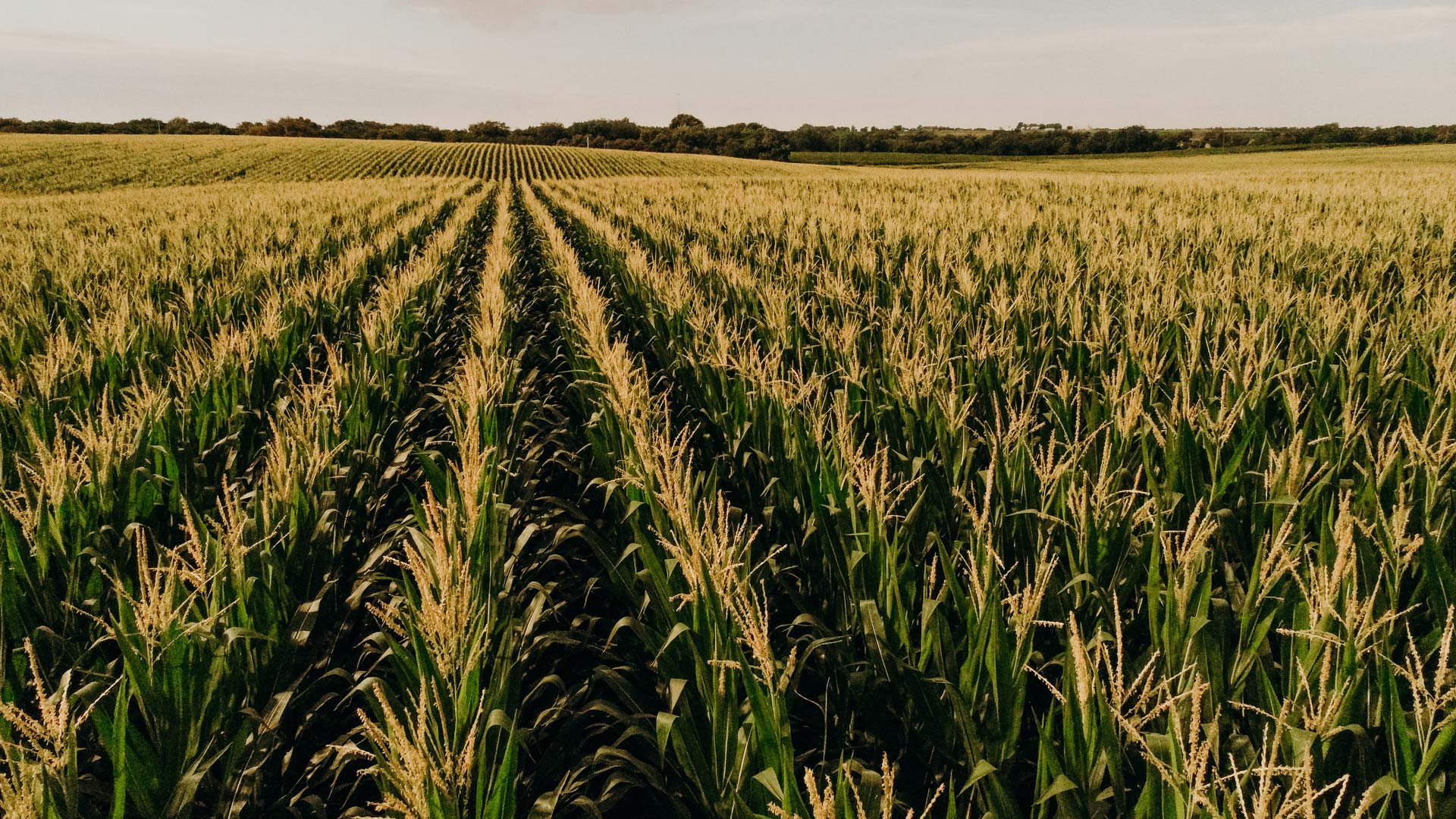As renewable energy grows, ethanol remains a critical part in reducing greenhouse gas emissions from vehicles on our streets and highways. Much of the ethanol fuel used to reduce emissions is made from corn, like field corn grown in Nebraska.
Ethanol production from corn is more than just turning kernels into a renewable fuel — it’s a highly scientific process that also produces high-demand ethanol coproducts. It also is an important market for corn grown in Nebraska, helping increase profitability for the state’s many corn farmers.
What is in ethanol? How is ethanol manufactured? Read this step-by-step guide to the ethanol production process to learn how this fascinating biofuel is made.
Steps in the Ethanol Production Process
Nebraska is the second-leading producer of ethanol in the country! Most of the ethanol made in Nebraska is made using the dry-milling process.
Todd Good, plant manager at the ADM Corn Processing Division in Columbus, Nebraska, said the dry-milling process uses corn, water, yeast and enzymes. There are several steps, but all production of ethanol from corn starts in farm fields.
“Ethanol production begins on American farms where corn is grown and harvested — I would say by some of the most hardworking and dedicated individuals our country has to offer,” Good said.
Some farmers truck their corn directly to ethanol plants at harvest. Others may store their corn in large grain bins so they can deliver it to the plant at a later date. Some corn also arrives at the ethanol plant on trains, which are usually loaded with corn at a grain elevator.
Once the corn arrives at an ethanol plant, it is stored in grain bins and cleaned of any debris or foreign objects that may have been mixed in with the kernels.
Milling
In the dry-milling ethanol-making process, the next step is to grind the corn kernels into a fine powder, or corn flour. This is called milling the corn.
The corn flour is then mixed with water to form a slurry, which can be pumped throughout the plant.
Liquefaction
The next step in the ethanol-making process is called liquefaction. That’s when an enzyme is added to liquify the starches and start the starch-to-sugar conversion process.
Saccharification
The corn-water slurry then undergoes saccharification to further break down the starches from the corn into sugars. This is done with the help of a different enzyme.
“We use certain enzymes to convert the starch component of the corn into a simple sugar or dextrose,” Good explained. “Starch is a complex carbohydrate of dextrose and we’re using enzymes that break starch down into the dextrose.”
Fermentation
The next step in the ethanol production process is fermentation, using yeast. A form of fungus also used in baking and beer brewing, yeast consumes the dextrose in the corn slurry solution and produces ethanol and carbon dioxide (CO2).
Unlike many ingredients used to make products, yeast is a living organism. These organisms have to be fed, kept in appropriate conditions and maintained at a particular temperature. Yeast can even get sick and need treatment, so it’s critical yeast is kept healthy.
“It’s not what you conventionally think is a manufacturing operation,” Good said. “You’re trying to keep a large biological entity fed and alive, day in, day out.”
Distillation and Dehydration
The result of fermentation is an ethanol/water mixture plant workers refer to as “beer.” While it’s called beer, this mixture is not the same as the beer produced in breweries. The next step in the ethanol production process is to purify the ethanol/water mixture into a 200-proof final product.
Distillation, as well as dehydration, purifies the ethanol by separating the ethanol from water and other particles in the ethanol/water solution. These two ethanol production steps begin with heating the solution until the ethanol vaporizes. Ethanol boils at a lower temperature than water, which allows the ethanol and water particles to be separated by boiling. Dehydration is used to remove any remaining water and further purify the ethanol.
Denaturation
The final step in the production of ethanol is denaturation. This is when the ethanol is mixed with another substance, in this case natural gasoline, to make it unfit for human consumption. Denaturing ethanol is done for regulatory purposes.
Nebraska Ethanol Fuels the Country
Nebraska’s ethanol production facilities manufacture a combined 2.5 billion gallons of ethanol each year, in addition to valuable co-products like distillers’ grains and corn oil. While Nebraska is a leading ethanol-producing state, much of the ethanol it produces is sent to other states — frequently California.
Ethanol plants around Nebraska, including the ADM plant in Columbus, strive to produce ethanol for consumers in California and around the world as efficiently as possible. The Columbus plant can produce up to 400 million gallons of ethanol per year, and its 350 employees are focused on getting the most value from every kernel of corn that comes through the facility.
“It’s really about becoming more efficient so you can make more ethanol from that bushel of corn,” Good said. “Overall, the industry has become more and more efficient over the years.”




